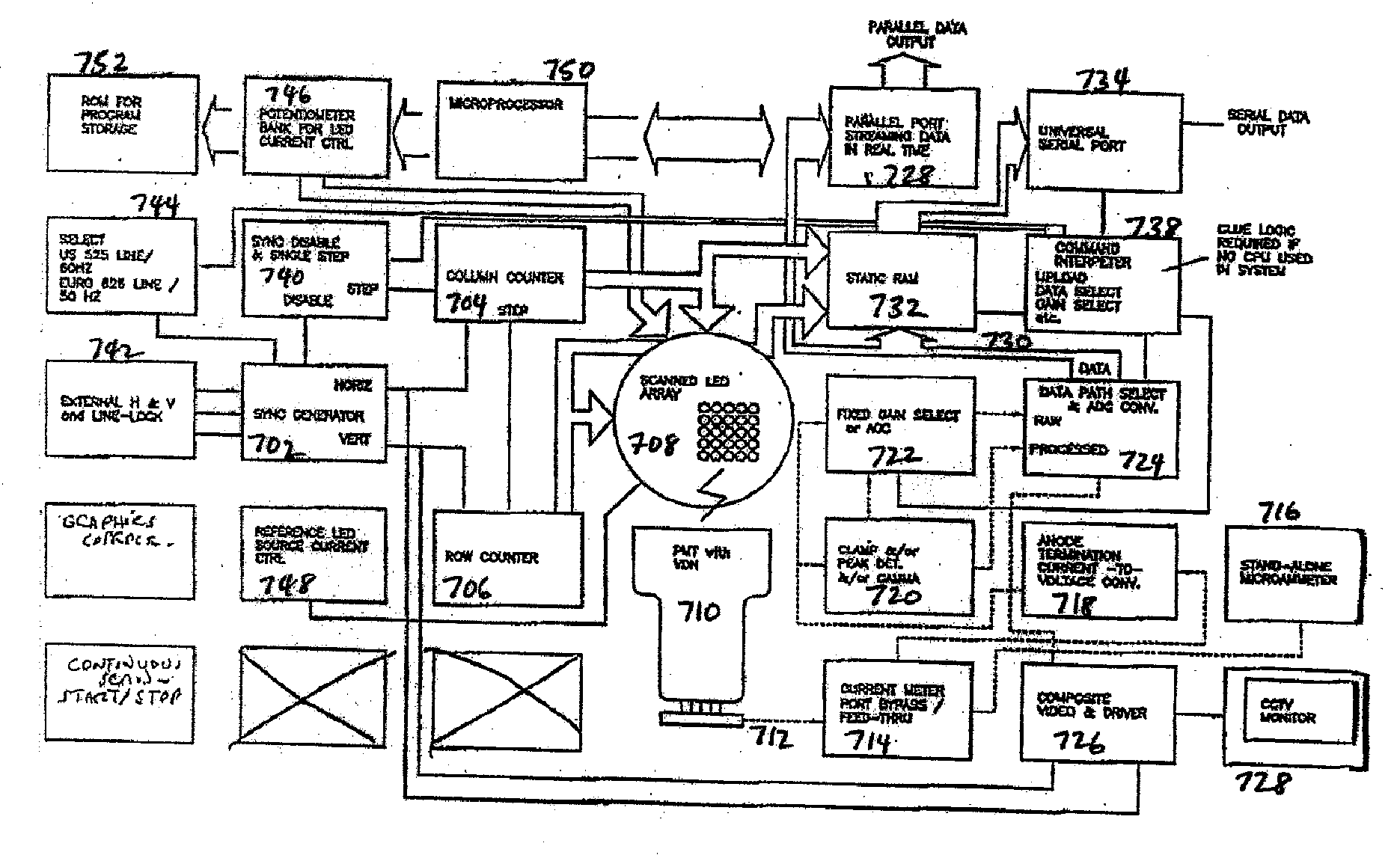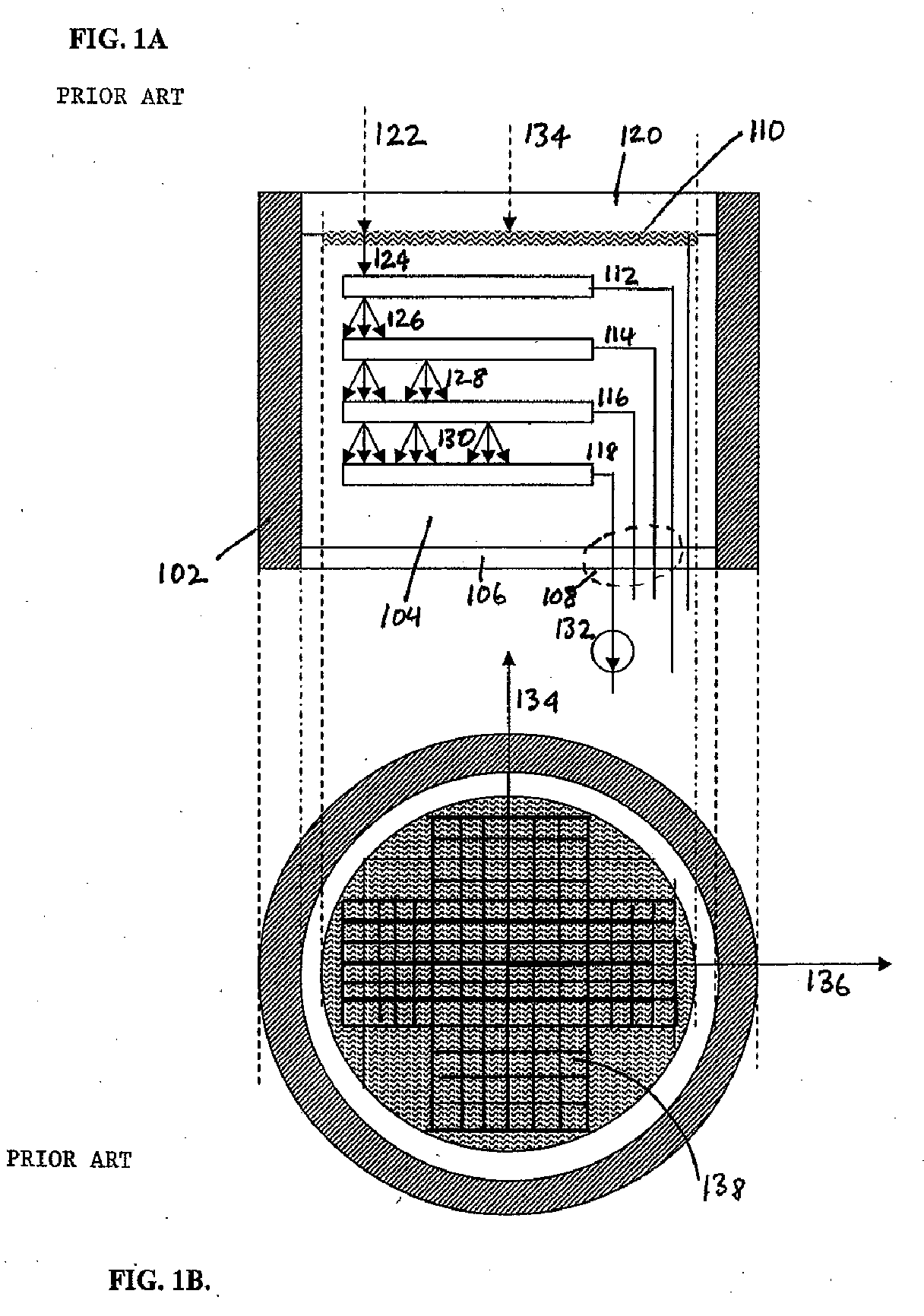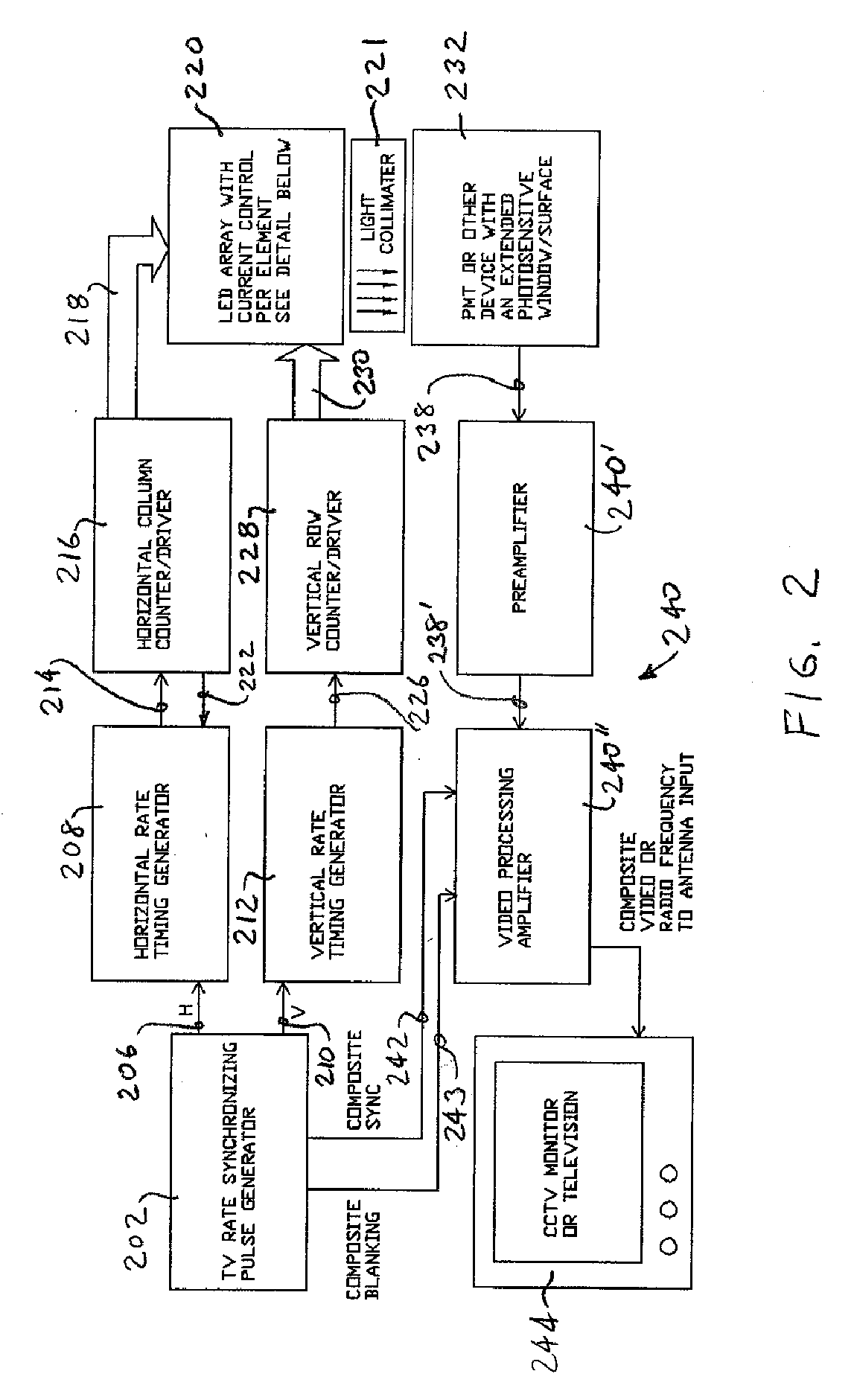Video Presentation of Photomultiplier Anode Signal
a video and anode technology, applied in the field of instruments, can solve the problem that the localized response of the photomultiplier tube will not be uniform over the faceplate of the photomultiplier tube, and achieve the effect of reducing the amount of photoemission
- Summary
- Abstract
- Description
- Claims
- Application Information
AI Technical Summary
Benefits of technology
Problems solved by technology
Method used
Image
Examples
Embodiment Construction
[0022] The present invention provides an apparatus and technique for producing a video image that is representative of the spatial-dependence of the response of a photomultiplier tube to incident radiation. The apparatus and process of the present invention utilize an array of light-emitting diodes (LED's) that are energized in a timing sequence that mimics a cathode ray tube raster scan used in commercial television technology. Specifically, a photomultiplier tube anode signal is modulated by the optical raster scanning of an LED array used to probe the photomultiplier tube. The modulated anode current functions as the camera component of a composite video signal input to a cathode ray tube television monitor. The video image so formed provides a representation of the spatial response uniformity of the photomultiplier tube.
[0023] In general, an array of light-emitting diodes is placed near the faceplate of a photomultiplier tube so that the radiative emission from the light emitti...
PUM
 Login to View More
Login to View More Abstract
Description
Claims
Application Information
 Login to View More
Login to View More - R&D
- Intellectual Property
- Life Sciences
- Materials
- Tech Scout
- Unparalleled Data Quality
- Higher Quality Content
- 60% Fewer Hallucinations
Browse by: Latest US Patents, China's latest patents, Technical Efficacy Thesaurus, Application Domain, Technology Topic, Popular Technical Reports.
© 2025 PatSnap. All rights reserved.Legal|Privacy policy|Modern Slavery Act Transparency Statement|Sitemap|About US| Contact US: help@patsnap.com



